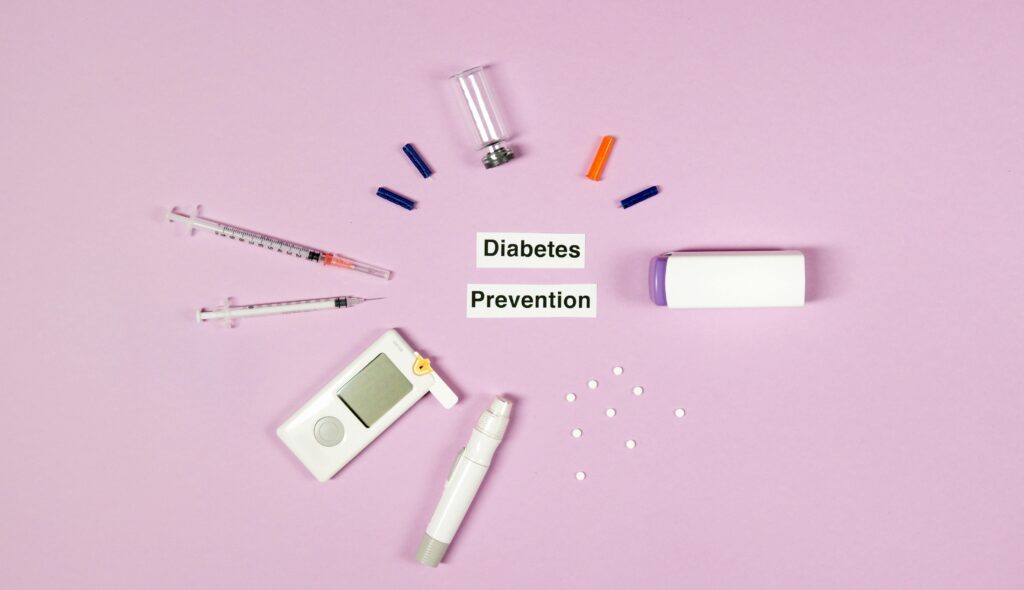Introduction Diabetic Warning
Diabetes is a chronic disease that millions suffer from around the world, wherein one’s body partially or fully cannot manage or regulate blood sugar in the body. Being able to identify warning signs and symptoms of diabetes is critically important for its effective management and treatment. If left undiagnosed, diabetes can cause serious complications to affect the heart, kidneys, nerves, and other parts of the body. In this article, we are going to look at the various types of diabetes, their early symptoms, their risk factors, and how one should approach diagnosis and prevention.

Types of Diabetes
First things first-let’s take a look at the types of diabetes. There are three main types:
1.Type 1 Diabetes: An autoimmune disease in which the immune system attacks the insulin-producing cells of the pancreas, thus creating partial or negligible production of insulin. Normally, insulin aids in the regulation of glucose within the blood. Type 1 diabetes usually appears in children or teenagers, though it sometimes can emerge even in adults.
2. Type 2 Diabetes: This is the most common form of diabetes. It involves a process in which the body becomes resistant to insulin or the pancreas does not produce enough insulin. Type 2 diabetes often shares a close link with lifestyle factors such as obesity, lack of activity, and proper dietary habits, though genetic factors are also major players.
. Gestational Diabetes: This form arises during pregnancy and usually clears after childbirth. However, women who have had it run a higher risk of acquiring type 2 diabetes later on.
Each of the types carries particular symptoms with it, though some signs are common in most of the types. The earlier diabetes is detected, the greater the chances of addressing it and preventing long-term complications.
Common Early Symptoms of Diabetes
These symptoms of diabetes tend to come on gradually. That is why many people can have diabetes for months or even years before they realize it. Yet, there are some telltale warning signs that need to raise a suspicion and can thus lead to early testing for the disease. Below are common symptoms among the types of diabetes:

1.Frequent Urination (Polyuria)
One of the hallmark signs of diabetes is frequent urination. In the case of high blood sugar levels, the kidneys are put to overdrive to filter and absorb as much glucose as possible. When the kidneys can’t keep up, this excess glucose is excreted into the urine, pulling along fluids from tissues, which in turn causes increased urination. If you find that you are making trips to the bathroom more often than you normally would-especially at night-this could be one of your early warning signs of diabetes.
2.Increased Thirst (Polydipsia)
The result of high-frequency urination can be dehydration; further, this can stimulate increased thirst. If you feel thirsty often, even after heavy fluid intake, it may be that your body is trying to replace lost fluids. Persistent thirst, accompanied by a condition of frequent urination, could well become one of the sure shots that blood sugar levels are high.
3.Unexplained Weight Loss
Though generally, obesity is associated with type 2 diabetes, unexplained weight loss is also one of the symptoms. When the body either fails to produce an adequate amount of insulin or the available insulin does not work properly, the body cannot use glucose for its energy needs. Therefore, it would start breaking down fat and muscles for energy, thereby causing weight loss, despite good or even increased appetite.
4.Extreme Hunger (Polyphagia)
People with diabetes may experience extreme hunger since their cells are not using glucose as a form of energy. This will lead to signals sent to the brain that the body is starved and requires food, even immediately after eating. It somewhat becomes paradoxical; nonetheless, excessive hunger indeed is considered a symptom, more so in type 1 diabetes.
5.Fatigue and Weakness
If the body is unable to use the available glucose for energy, it results in crippling fatigue and weakness. If you feel more tired, sluggish, or lethargic than usual, even when you have had enough sleep, this may well be an indication that your body is not able to function optimally as a result of increased blood sugar levels. Unexplained chronic fatigue is a warning sign.
6.Blurred Vision
High levels of blood sugar may swell the eye lens, causing blurry vision. Sometimes, this different balance of fluids within diabetes can take hold in the way the eye focuses light. If left unaddressed, this condition may lead to further serious eye complications, such as diabetic retinopathy, which may then cause blindness.
7.Slow-Healing Sores or Frequent Infections
Diabetes damages circulation and the body’s ability to fight infection. The outcome could be slow-healing wounds, most especially on the feet and legs, and a higher incidence of infections such as skin, UTIs, or gum infections. If you feel your cuts and bruises take so much time to heal, that can be a symptom of diabetes.
8.Tingling or Numbness in Hands and Feet
Prolonged high blood sugar levels can destroy some nerves over time. This usually occurs at the extremities and may cause tingling sensations, numbness, or a “pins and needles” feeling, especially in the hands, fingers, feet, and toes. This symptom is more typical for type 2 diabetes and already testifies to long-term high blood sugar.
High blood glucose levels can lead to dehydration, which may make your skin feel dry. Nerve damage and poor blood circulation that often go along with diabetes can also lead to dry, itchy skin, particularly on your lower legs.

Early Symptoms of Type 1 Diabetes
The onset of type 1 diabetes is usually rapid, and the symptoms come on very suddenly. Specific type 1 diabetic symptoms include:
-Ketones buildup: If the body isn’t getting sufficient amounts of insulin, it will begin to break down fat into energy. During this process, substances called ketones are made. If the amount of ketones increases too much in the blood, then a serious health complication may occur called Diabetic Ketoacidosis. The symptoms of DKA are nausea, vomiting, pain in the abdomen, breath smelling fruity, and confusion.
Sudden Weight Loss: Unlike in the case of type 2 diabetes, with this type one experiences rapid weight loss due to the inability of the body to utilize alternate sources for energy.
Rapid Onset of Symptoms: The onset of the symptoms of type 1 diabetes is rapid, often within weeks or days. This is quite scary and is an immediate call for medical attention.
Early Symptoms of Type 2 Diabetes
The symptoms of Type 2 diabetes are more gradual and may take a few years, which is why many people with the condition remain undetected. Besides the general symptoms mentioned above, the following can be some of the early signs of Type 2 diabetes:
Dark Patches of Skin (Acanthosis Nigricans): Some people with type 2 diabetes develop darkened skin patches, especially on folds of skin in the neck, armpits, and groin. Acanthosis nigricans is a sign of insulin resistance.
Vulvovaginal Candidiasis: High blood sugar forms a perfect setting where yeast thrives. Though women are particularly affected by vaginal yeast infection, especially those with type 2 diabetes, men and children can suffer from skin or oral infections due to yeast overgrowth.
Early Symptoms of Gestational Diabetes
Because most women with gestational diabetes do not have overt symptoms, the disease is usually diagnosed through routine blood glucose testing. However, the following may be present:
Polydipsia and Polyuria:These complaints are common in all types of diabetes including gestational.
Fatigue:Though normal in pregnancy, with gestational diabetes, the tiredness may be accentuated.
Risk Factors for Diabetes
Knowing the risk factors for diabetes will clue you in if you have a reason to bother about seeing early symptoms. Common risk factors include the following:
Family History: If either one of your parents has diabetes, or a sibling, then your risk increases.
Age: The risk in type 2 diabetes increases with age, especially after 45.
Weight: Overweight or obesity is a major risk factor for type 2 diabetes. Extra weight, particularly around the abdomen, can lead to body resistance against insulin.
Inactivity: Lack of regular physical activity is another cause for increasing the risk of type 2 diabetes due to the contribution of gaining weight and insulin resistance.
Ethnicity: People of African, Hispanic, Native American, or Asian descent have a higher risk of developing type 2 diabetes.
High Blood Pressure or Cholesterol Levels: Both high blood pressure and high cholesterol are related to a higher risk of developing type 2 diabetes.
Diagnosis of Diabetes
If any of the above symptoms make you suspect that you may be suffering from diabetes, you must seek medical consultation. The earlier the diagnosis, the better you will be able to evade serious complications. The diagnosis is usually made by the following tests:
1.Fasting Blood Sugar Test: This test can determine the level of glucose in the blood after not eating for eight hours, usually overnight. A level of 126 mg/dL or greater on two different tests suggests a person may have diabetes.
2. A1C Test: This is a measure of the average level of blood sugar over the last two to three months. A result of 6.5% or greater on two separate tests suggests that a person may have diabetes.
OGTT – Oral Glucose Tolerance Test: You are made to drink a sweet solution and your blood sugar is checked after periods of time. This test is mainly used to diagnose gestational diabetes.
Prevention and Management of Diabetes
Early identification of symptoms, leading to early intervention, can significantly enhance the quality and outcome of life in individuals diagnosed with diabetes. Such lifestyle modifications as maintaining a proper diet, regular exercise, and correct weight could prevent many causes of type 2 diabetes or at least delay its onset. If one has type 1 or type 2 diabetes, good management includes monitoring blood glucose, using medications as ordered, and following a personalized care plan with a health professional.
Conclusion
Early recognition of the symptoms of diabetes is
It can be a key to timely diagnosis and effective management. Frequent urination, unquenchable thirst, unexplained weight loss, and fatigue are signs that should not be ignored, especially when risk factors for diabetes exist. Be better positioned to take charge and look after your long-term health, and avoid complications from this condition. In the event of these symptoms, seek a healthcare professional for further evaluation and testing. Early intervention can make a big difference in managing diabetes and improving quality of life.




